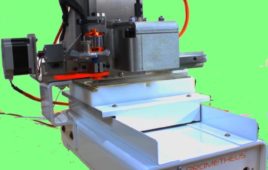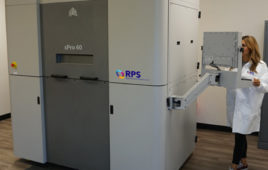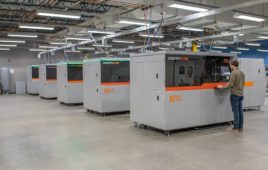I’m a product management and development professional and I’ve worked with organizations such as General Electric, Ericsson, Honeywell, Meritor (formerly a division of Rockwell International), and others in the private sector.
Most of my work is in new product development and product management, and I’ve developed or managed over 40 product lines for both North American and global markets. My work almost always includes working closely with the engineering department in the development and auditing of new products. Sometimes I discover an engineering team that has both organizational and technical challenges to overcome.
My question is: How do we properly evaluate the efficacy of a design team (internal or contract) when we have little evidence of past performance? These 5 steps will provide excellent insight into their capability to meet project requirements.
The 5 steps are:
1. Demonstrable expertise and success in the EXACT discipline
2. Numerous positive references and testimonials
3. Advertised expertise
4. An internal audit function
5. Do they stand behind their design or so they shrug-off their failures and continue to bill time & materials
First, demonstrable expertise and success in the EXACT discipline, seems obvious. Too many individuals and organizations throw money away by selecting a firm or individual based on only surface knowledge of the requirements of the project. A firm with outstanding sales and marketing can fool an unsuspecting prospect by showing expertise that only appears to apply to the project at hand.
The problem, aside from possible deceptive practices of the sales & marketing team, is the technology used today is extremely complex. This complexity makes it more difficult for a designer to successfully move from one technology to another because the specialization required to be successful in one technology may not be transferrable to another.
To counter this, it is critical that you view past products the firm considers successful and verify that it uses the same technologies as your proposed design. Hire an independent consultant to evaluate the competence of the firm if you do not have the technical ability to make this evaluation. It will cost relatively little for the consultant to do the evaluation and the benefit of risk reduction will far outweigh the cost.
Second, they must provide numerous references and testimonials with contact information! This is a simple request and if they refuse to provide references and testimonials under a non-disclosure agreement, then walk away. Contract firms and consultants gain new business through referrals. If they will not provide names of satisfied clients, they either do not have any or the technology you require is different than any of their previous work.
Third, do they advertise the expertise you require? This may sound crazy but I once entered a project very late in its development. The design firm was many months behind schedule and I was tasked with determining the causes of the delay and return the project to a proper course. I immediately “googled” the design firm we were using and found that they made no mention of the expertise required for our project on their website. I then did the same for their competitor and found multiple pages describing their successes in this particular field.
It is a good marketing practice to tout successes and satisfied clients on your website and in marketing material. If your contractor or consultant does not market a technique and past successes, they probably have do not have the ability to succeed with your project.
Fourth, do they have an internal QA process? How does your component supplier ensure your factory receives quality components? They probably have a quality assurance (QA) department responsible for quality control. A good factory also has work procedures they must follow – especially if they are ISO9000 certified. Doesn’t it make sense that your design team should have work procedures and formal peer reviews of designs and test results? During your interviews, demand to see their work processes and meeting minutes from design reviews.
They will say it is “privileged” information – give them a felt-tip pen and tell them to black-out the customer data. If the CIA can redact classified data, then your potential design firm can do the same if they want your business.
Lastly, do they guarantee their work quality and schedule? So your prospective design firm made through the first 4 steps so they are probably technically qualified and honest enough to share their documents and clients. Now the real test, will they guarantee the schedule and cost targets in their proposal? Development projects are expensive but missing a launch date is much more expensive. You can make up for cost overruns with additional sales but sales lost due to schedule delays are sales and profit lost forever.
An example from Step 3 above. These two companies offer the “same” technical services. The first firm offers no guarantees or compensation for missing schedules. The second firm guarantees first time passage of critical performance tests or the second round is free. Same project, same design criteria, radically different business philosophies. Which company would you choose?
We cannot view design firms as clones of each other. They have their own expertise and business practices. Find the firms that claims a proven record of technical success in your field of need. Then eliminate any of them who cannot prove this expertise and back-up the proof with some form of guarantee. The hard work and diligence required by this vetting process will be returned to your firm many times. Failure to do the work can cause your firm irreparable damage and possible collapse.
Doug Ringer is currently the Director of Product Development for a leading firm in the healthcare emergency response industry. Doug has held global roles in marketing, manufacturing and R&D at General Electric, Ericsson, Honeywell, and Meritor. He also served on the board of directors and president of the board of a civil rights organization based in Kentucky. Doug lives with his family near Louisville, Kentucky. Follow him at www.dougringer.com.
Filed Under: Rapid prototyping




